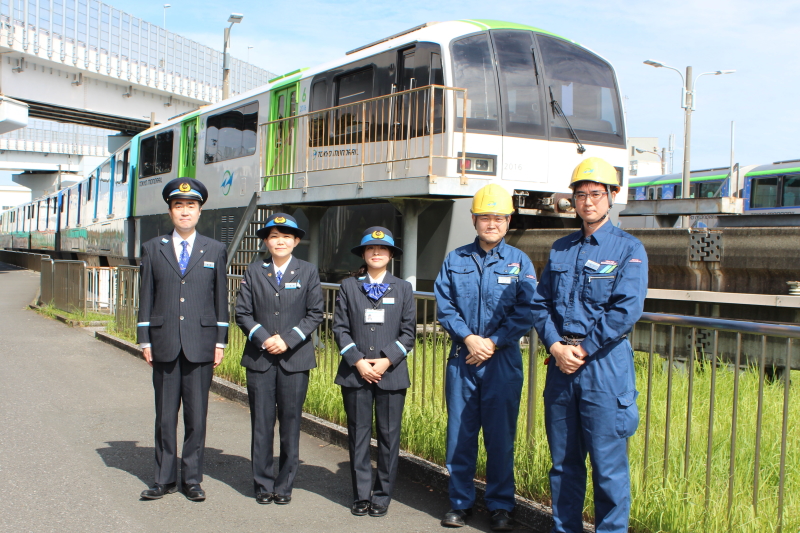The Tokyo Monorail is a way to travel that you will find rather memorable. It opened on September 17, 1964, just before the Tokyo Olympics, which opened on October 10, 1964. The Tokyo Monorail connects Hamamatsucho to Haneda Airport with 11 stations, 8 of which are located in Ota City, so it is very familiar to Ota. We have asked five staff members who work in the Operation Control Room, Crew Section, Facility Section, Vehicle Section, and Haneda Airport Terminal 1 Station of the Tokyo Monorail to meet with us for an interview! They enthusiastically spoke about what is important in their work, behind the scenes info, and their favorite spots in Ota City.
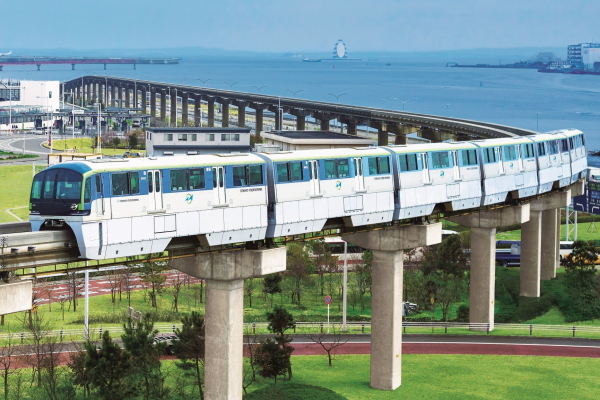
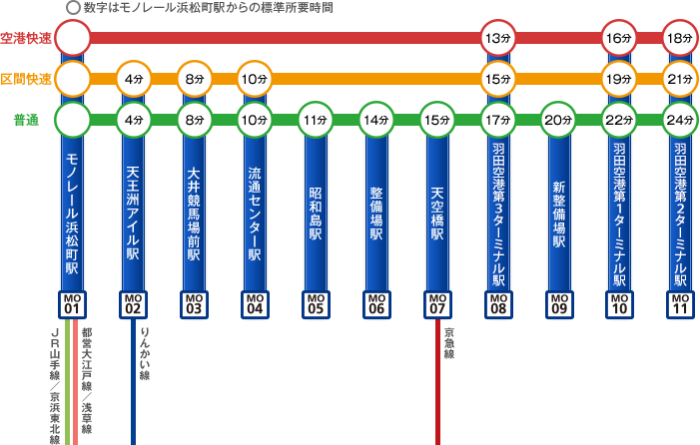
Interviewees
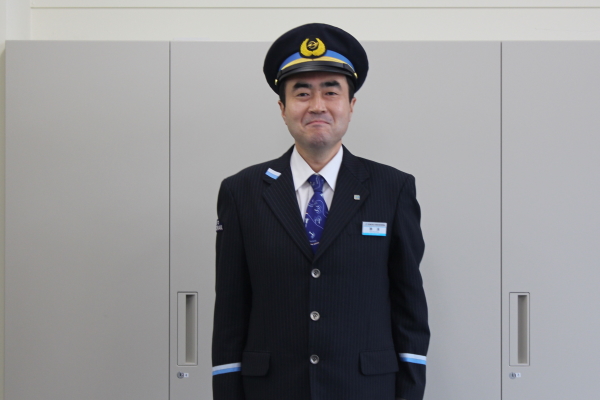 | 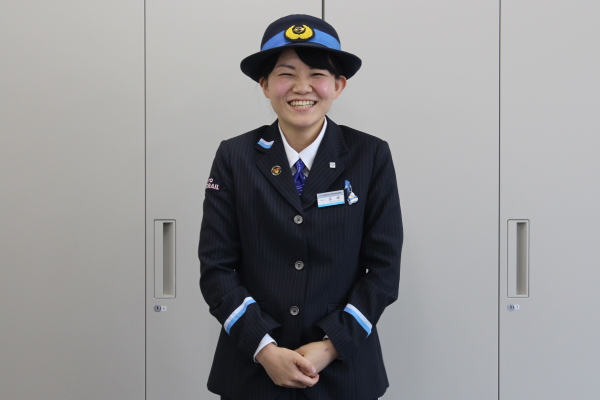 | 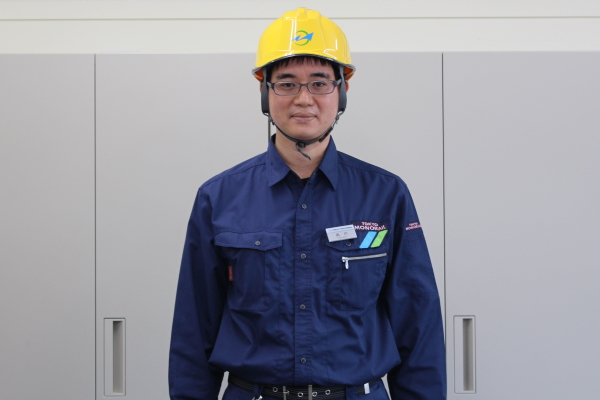 |
Mr. Daisuke Katsuura
Transportation Department | Ms. Tomomi Takashima
Transportation Department | Mr. Tomohisa Degawa
Engineering Department |
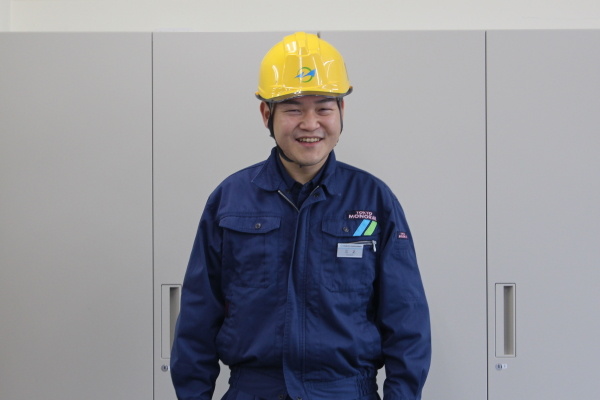 | 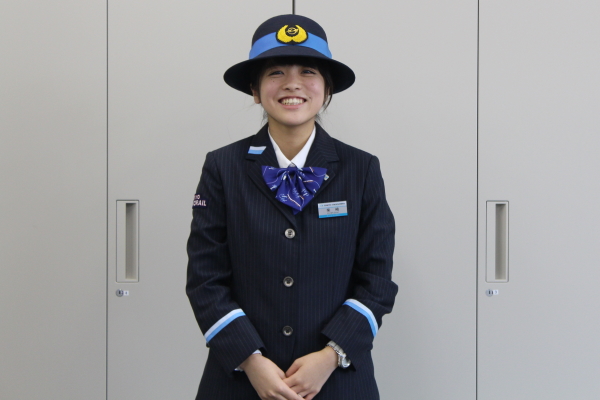 |
Mr. Satoshi Mikami
Engineering Department | Ms. Rio Shibazaki
Sales Department |
- What made you want to take this job?
Mr. Katsuura, Transportation Department:
I am now working as an operation commander, but I have experience in other positions such as station staff, conductor, and driver in the past. Operation commanders give instructions to drivers and all related sections and manage the operation of all working trains. While gaining a variety of experiences, I became fascinated by the kinds of work that deals with all departments in the company and that also serves as their coordinator, so I pursued this job.
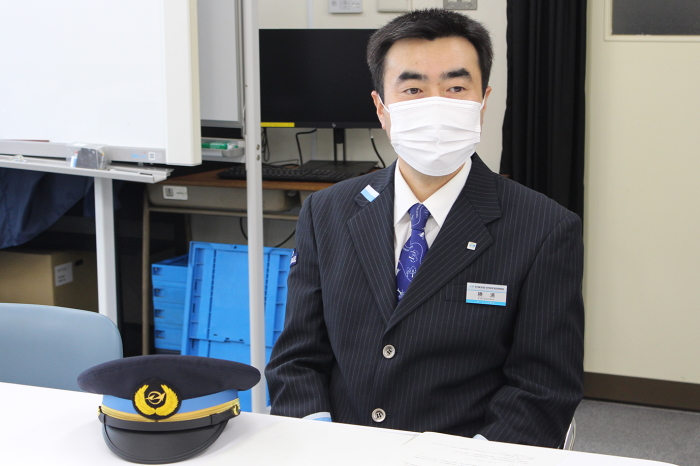
Ms. Takashima, Transportation Department:
I have been interested in the duties of drivers since I joined the company. At our company, those who are 20 years old or older and have one year or more of station work experience can take the in-house driver's examination. So, after working at the station for three and a half years, I wanted to rediscover the appeal of the monorail from the perspective of a driver and convey it to customers, so I applied to become a driver. We also have five female drivers. I'm still a young driver in my fourth year, but I find it very rewarding. Days are never exactly the same, and I learn new things every day!
Mr. Degawa, Engineering Department:
I always wanted to work in a job related to public transit such as railroads or buses, but since I majored in civil engineering at university, I became interested in monorails whose routes are mainly composed of concrete structures. Typical railroad tracks are made of iron and railroad ties, but routes traveled by monorail are made mostly of concrete. I found that unique trait interesting.
TriviaMonorails
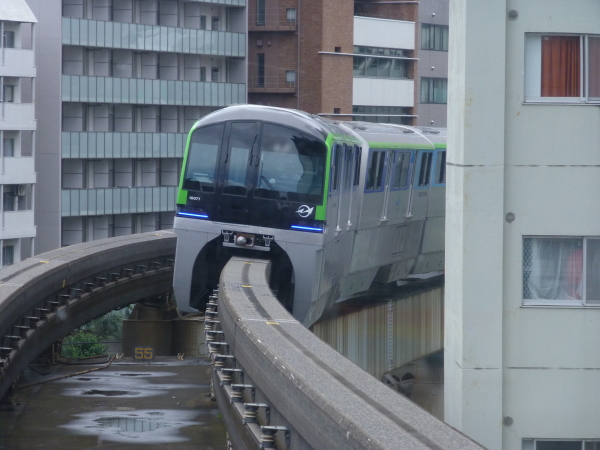 | ・ “Monorail” literally means “mono = one” rail because there is only a single rail.
・ Monorails use rubber tires, which emit little noise and are good at acceleration and deceleration, making them an appealing option for routes that run above cities. One monorail car contains 20 tires, with a total of 120 tires for six cars. |
"The maximum speed of the Tokyo Monorail is 80 km/h, which is the highest speed among domestic monorail operators. It is also the only monorail that operates an express train (Haneda Express) that can overtake other trains."
(By Mr. Katsuura, Transportation Department)
- What do you value and keep in mind when you work?
Mr. Katsuura, Transportation Department:
I always keep in mind that ensuring the safety of our customers and field employees is our top priority. Although I work in a department that does not have direct contact with customers, I always try to think from the standpoint of customers who are on the train or at the platform. In particular, when trouble occurs, the train schedule will be disrupted and other disturbances might occur. Therefore, by adjusting the train interval, including changing the train type, I try to respond in a way that helps everyone to avoid passenger congestion on their route, especially due to COVID-19 at the moment.
Ms. Takashima, Transportation Department:
In order to eliminate misunderstandings and assumptions at work, I value basic actions such as pointing to confirm and callouts in a loud voice. I also hope that the loud voice will lead to a sense of security for the passengers with me. Also, a detail specific to this work, the monorail runs on rubber tires, so the timing for applying the brakes changes according to conditions such as the season and temperature. Although this may be done when driving a regular train, too.
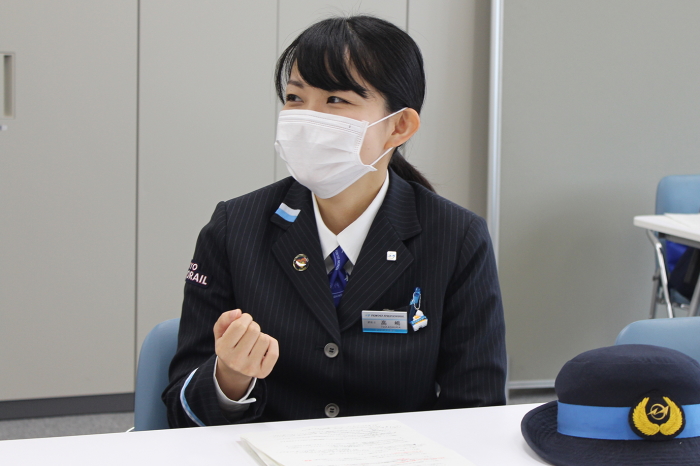
Ms. Shibazaki, Sales Department:
What I keep in mind is communication with customers. It is also important to do our best to look ahead so that we can guide customers and anticipate situations that we might encounter. For example, if someone asks, “How do I get to Hamamatsucho?" I am conscious not just of answering it properly, but also adding information that makes it easier to understand, such as what color the train is and on which platform it can be found. Due to the nature of the location, there are many inquiries such as “Where can I eat at the airport?" and “Where can I buy souvenirs at the airport?" so I try to stay knowledgeable about the facilities.
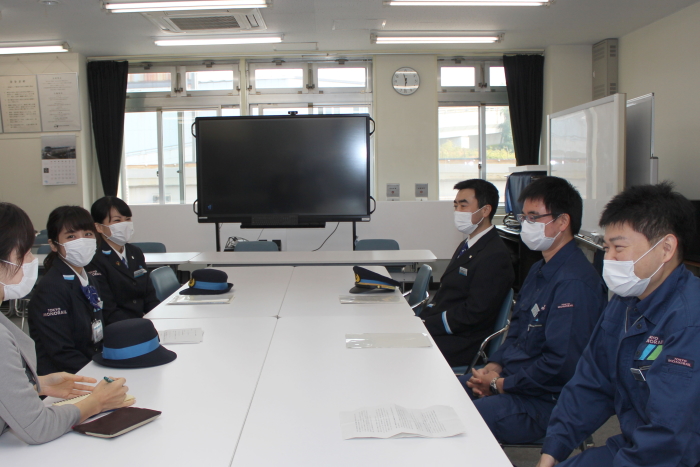
- Please tell us a memorable story about your work.
Mr. Degawa, Engineering Department:
It was when the Tohoku Earthquake happened. I was at home sleeping when the earthquake occurred because it was after a night shift, but I was worried about the situation, so I went to work by bicycle from home. A company-wide inspection was conducted that night in order to confirm safety of operation, so the next morning, we were able to carry out normal operation from the first train. When the doors would barely close on that first train, I realized how many passengers had to spend the night stuck at the airport, and I was really relieved that we were able to operate normally right from the first train.
Ms. Shibazaki, Sales Department:
Every year, we hold the Tokyo Monorail Festival at Showajima Station in October, though it had to be canceled this year due to the COVID-19 situation. Previously, a child who participated in the Tokyo Monorail Festival had his picture taken with me by his father, and later they handed me a copy of the picture at the counter that made me very happy!
TriviaTokyo Monorail Festival
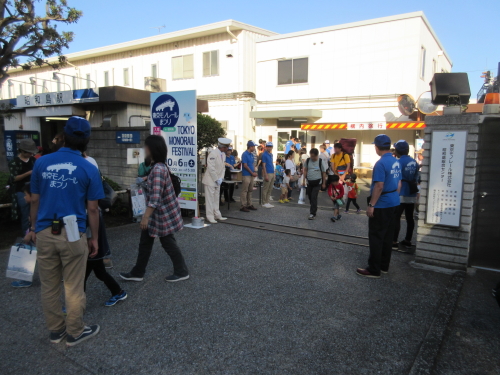 | The Tokyo Monorail Festival is held at Showajima Station, in a rail yard that is normally not accessible, and you can experience a test drive of a maintenance train, a tour of a maintenance facility, and the view of sitting in the driver's cab in uniform. It is a wonderful event where each department sets up its own booth and introduces the monorail to visitors. |
"At the booth of the Vehicle Section, we sold parts of scrapped cars and old signboards from the facility, which pleased those who are fans of railways and monorails.”(By Mr. Mikami, Engineering Department)
|
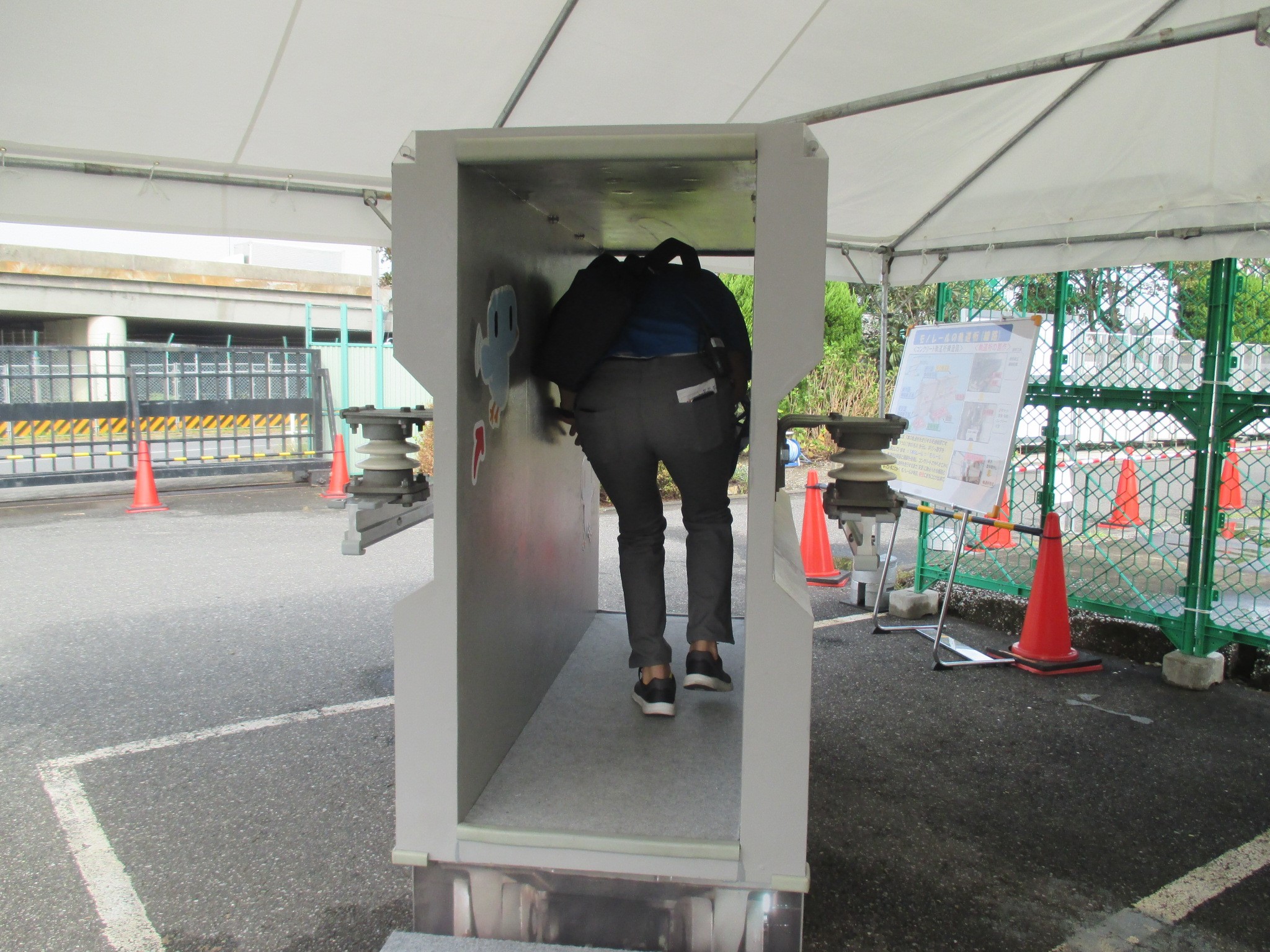
| “At the Facility Section’s booth, we exhibited a life-size model of a track beam. The visitors were able to see the track beam up close, and they were surprised at how big it was.”(By Mr. Degawa, Engineering Department) |
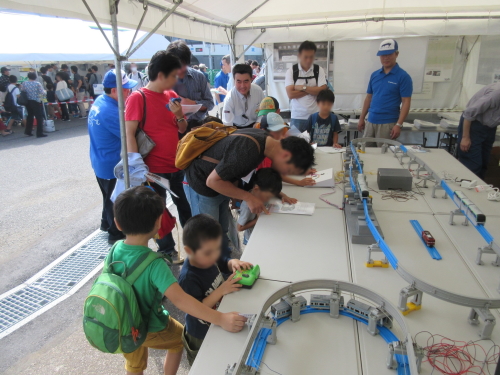
| “At our booth for the Operation Control Room, we exhibited the changes in train operation tables since the establishment of the monorail line. Back then, there were only a few trains running in an hour, but now it’s about 15, with the maximum being 18, so it’s increased a lot.”(By Mr. Katsuura, Transportation Department) |
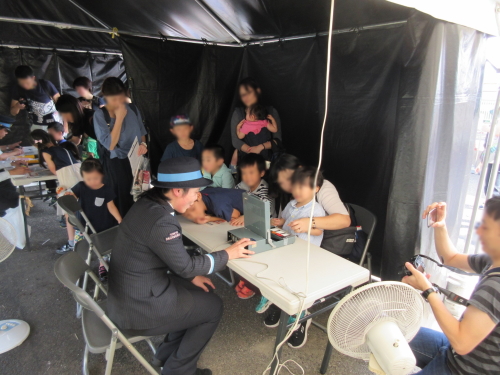
| "At the booth of the Crew Section, we prepared an aptitude test to become a driver, but arranged it with a game twist to it. You can play by pointing to the numbers and colors that are randomly arranged in the squares as instructed within the allotted time. Everyone seemed to have liked it.”(By Ms. Takashima, Transportation Department) |
- What gives you a sense of fulfillment from your job?
Ms. Takashima, Transportation Department:
We drivers do not have many opportunities to interact with customers, but when I can sense from behind me that families of passengers are admiring the scenery from the train window and enjoying the extraordinary experience of the monorail, or when they wave at me after getting off, and also when I hear them saying it was fun, it definitely makes me happy.
Mr. Mikami, Engineering Department:
It’s when the things I was involved in take shape. A vehicle enters the maintenance facility according to the inspection process, and the necessary parts are delivered properly in order for the maintenance to proceed safely, and then the vehicle exits the maintenance facility. When I see that vehicle in perfect shape and transporting passengers again, I find it rewarding.
Ms. Shibazaki, Sales Department:
When I’m thanked by a customer after responding to their needs. As mentioned before, we’re not able to do certain things due to COVID-19, but we’ve planned and managed various events so far. For example, setting up a place for customers to write their comments, holding a summer festival at Haneda Airport Terminal 2 Station, which has a huge entrance inside the ticket gate, and inviting a brass band to hold a monorail concert. When these plans to promote the station are held successfully, I feel very happy.
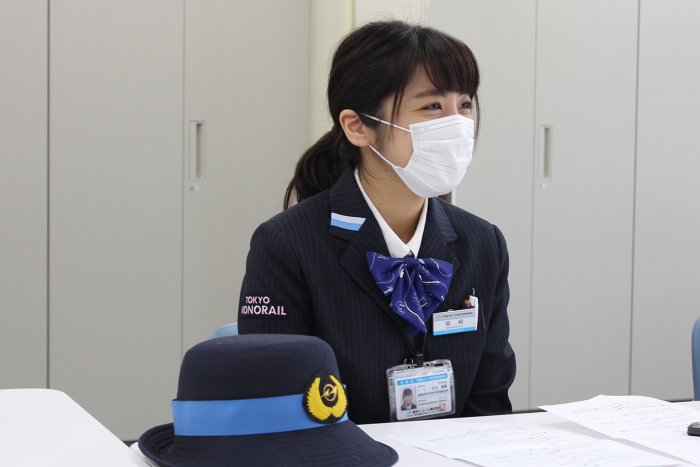
- Tell us about the typical schedule of your day.
Ms. Takashima, Transportation Department:
There are roughly two types of work, day shift and overnight work, and the start of work hours varies depending on the route. Our day's work starts from Showajima Station (driver's station). We take turns driving according to the train types, “Local,” “Rapid,” and “Haneda Express,” which travel between Hamamatsucho Station and Haneda Airport Terminal 2 Station.
Mr. Degawa, Engineering Department:
Since night work cannot be done while the trains are in operation, we have about 3.5 hours to finish the work, from half past midnight, when the trains enter the garage, to 4:00 a.m. That’s the difficult part.
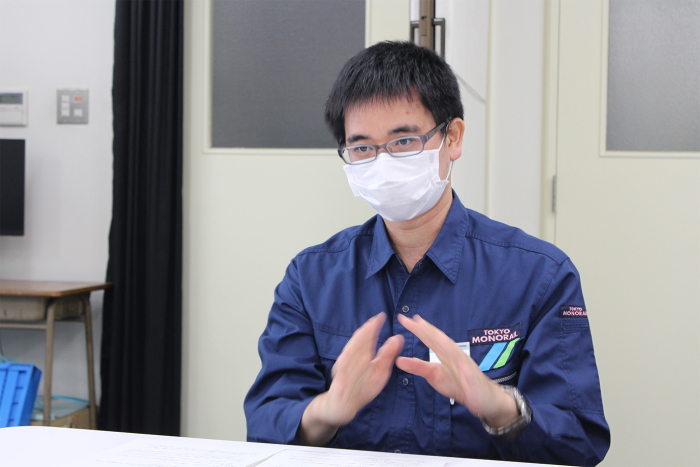
- We heard that there has not been an accident in 50 years. What are you careful of on a daily basis?
Mr. Katsuura, Transportation Department:
We try to always be aware that the monorail is a special railway that runs in high places, unlike regular railways that run on the ground, and with that in mind, we work with safety measures and risk management intended to account for those circumstances should trouble arise. Since the monorail runs in high places, it is not possible to stop the train between stations under any circumstances. In the event of an abnormality, we have to stop at the nearest station and drop off the passengers at the platform to evacuate. We always pay attention and perform training in order to avoid such a situation.
Mr. Mikami, Engineering Department:
We value teamwork in everything we do and that’s how we work. Our department handles more than 1,000 parts, and cooperation with related parties is essential for ordering and managing those parts. In addition, irregular work may occur during stormy weather such as typhoons and snowfalls. When Typhoon No. 15 approached in 2019, we had a hard time. However, by helping each other and using teamwork, we were able to manage the situation with no significant trouble.
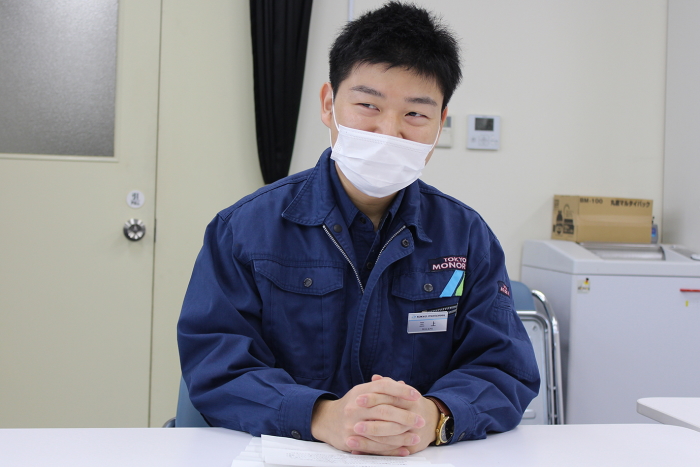
- Please promote the Tokyo Monorail.
Ms. Takashima, Transportation Department:
We look forward to your continued support for the Tokyo Monorail, which is fun to ride and fun to watch! The monorail is not only attractive as a means of transportation, but the view is also amazing. After passing through the buildings in the city area, you will see the waterfront, and in the end, you will arrive at the sparkling airport. The views are different in the morning and at night. During the winter season, the bridge near Oi Keibajo Mae Station is lit up at night, and it's very beautiful! Also, since there are many waterfront areas around here, you can view the monorail from the water in a canoe or aboard a ship, and since the monorail runs parallel to the Metropolitan Expressway, it would be fun to look at the monorail from passenger seat when driving.
Mr. Mikami, Engineering Department:
Currently, we have three types of monorails, the 1000 series, the 2000 series, and the 10000 series, and in numerous color schemes as well, which is rare among monorails nationwide. Recently, monorails with various kinds of wrap advertising are also running. Please enjoy viewing these.
TriviaVehicles with wrap advertising
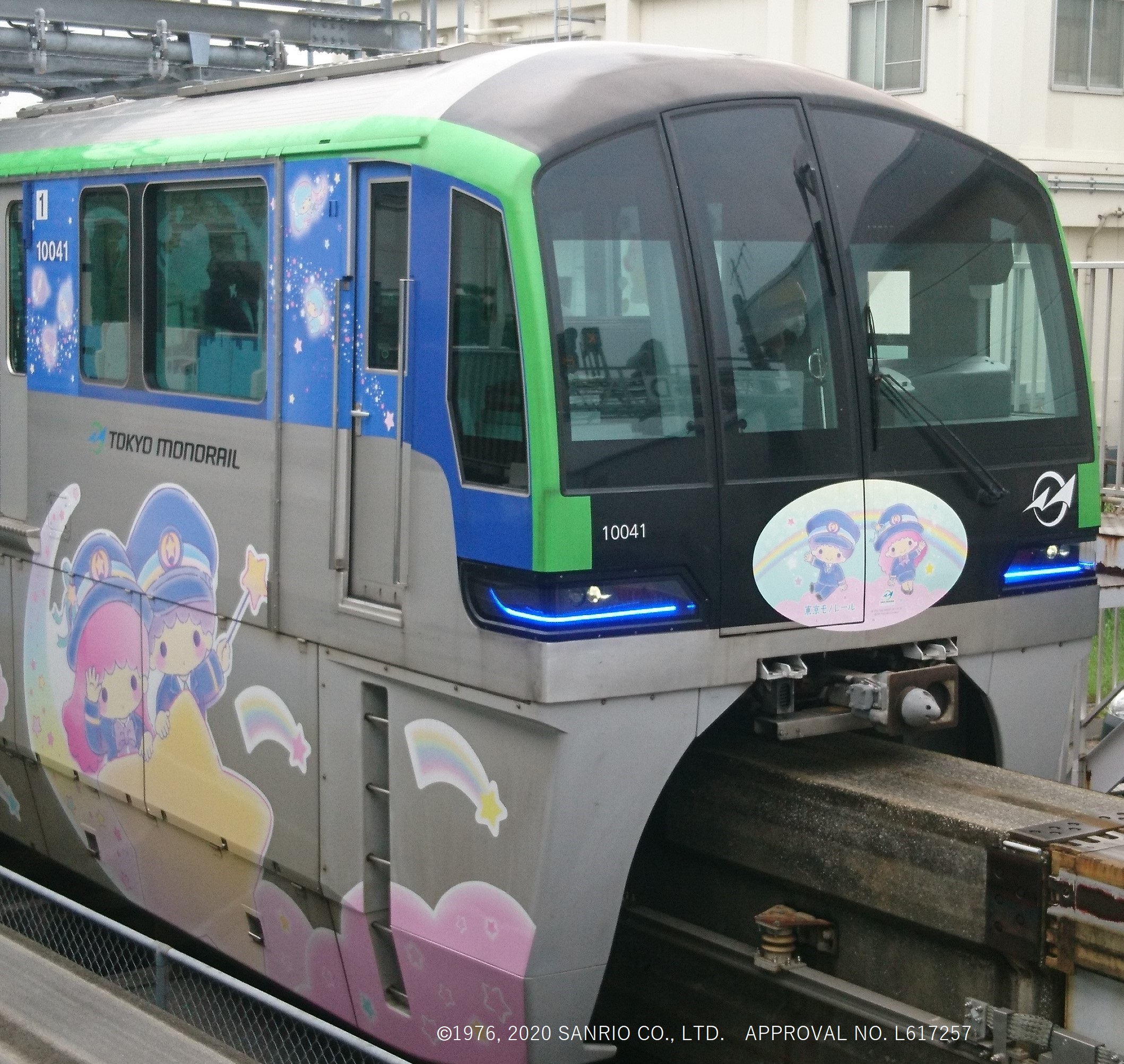 | Various kinds of wrap advertising are applied to the Tokyo Monorail depending on the season. A little while ago, "Pokemon" monorails were running, and now "Kiki & Lara” monorails are running.
In addition, the official mascot "Monorun" is also on the monorail seats. The Tokyo Monorail is waiting for you with various looks to enjoy, so please keep an eye out! |
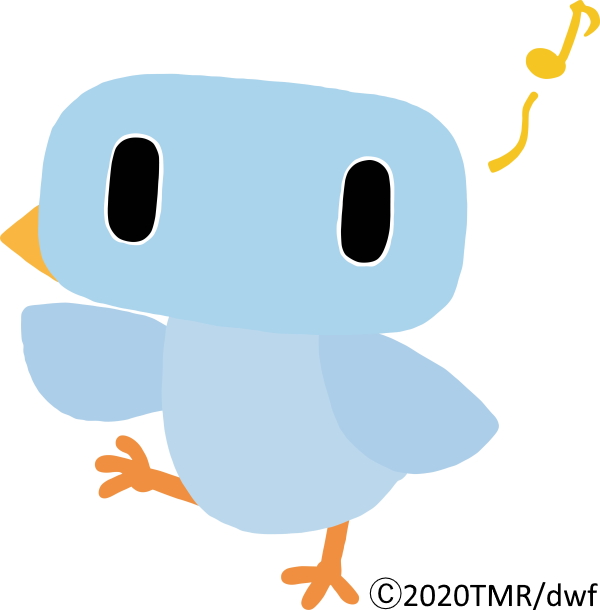 | [Monorun]
Monorun, a bluebird of happiness, often goes to dry beaches along the railways for sunbathing. Monorun’s favorite food is freeze-dried tofu. |
Tell Us Your Recommended Spots in Ota City!
- What is your favorite station in Ota City?
Mr. Katsuura, Transportation Department:
My favorite is Showajima Station, which is also the main depot for the trains. There are no private houses around the station, giving it an atmosphere you can’t find anywhere else. I like the aura of “a hidden station in the city.”
Ms. Shibazaki, Sales Department:
Mine would be Tenkubashi Station, mainly because I change trains there. When I participated in a fire-fighting review, people from the Airport Fire Department took very good care of me. I also remember practicing on a hot day, wearing coveralls. Oh, and the station name is stylish. When you just hear the name, it makes you wonder where it leads to.
Ms. Takashima, Transportation Department:
My favorite is also Tenkubashi Station. I like the current laid-back atmosphere, but I'm also looking forward to seeing the changes that Haneda Innovation City will bring when it’s fully in operation. There is also a footbath deck, and you can see the monorail running from there. I’ve been there myself a few times, and I personally recommend the spot for sure.
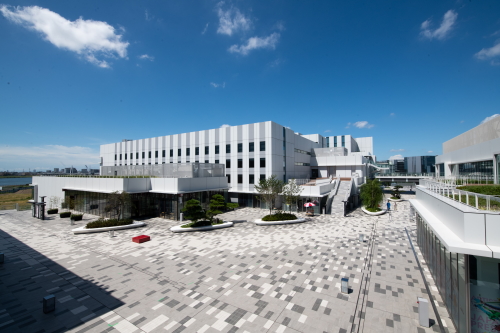 | 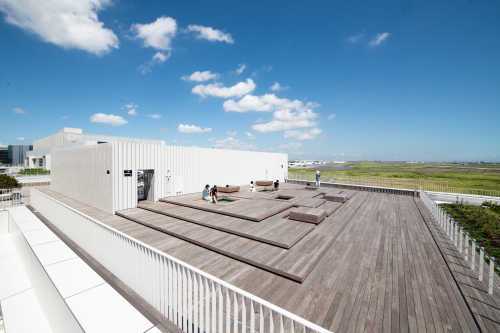 | 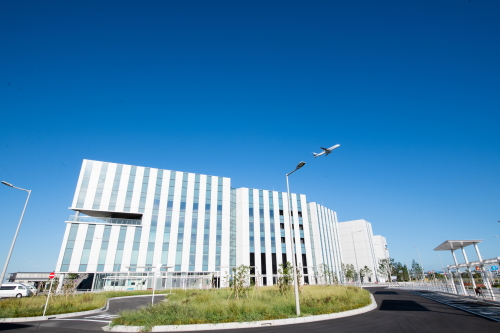 |
| Portions of Haneda Innovation City opened on July 3, 2020. |
- What is your favorite spot along the railway?
Mr. Degawa, Engineering Department:
When you depart from Haneda Airport Terminal 1 or 2 Station, the train will run in a tunnel for a while. The moment the tunnel ends and the train moves above ground is quite a sight to see. If the weather is nice, you can see the industrial area of Kawasaki on the left, Mt. Fuji in front of you, and the airport terminal on the right as well as the TOKYO SKYTREE® depending on the day, so I think this is a spot where you can fully enjoy the scenery from the monorail!
Ms. Takashima, Transportation Department:
I like the spot where switching to the passing siding (*) at Showajima Station occurs. The moment when the track beam with a width of 80cm and a height of 140cm suddenly moves is quite a sight to see. If you are going to Haneda Airport, get on the front car of a local train, and you can see it when a rapid train passes. I also like Morigasaki Park on the rooftop of Morigasaki Water Reclamation Center because it’s unique.
* What is a passing siding? It is a track where a train waits for another train to pass it on a single-track railway. The Tokyo Monorail is the only monorail that has express trains (Haneda Express) which can pass local trains. The passing siding is set up near Showajima Station.
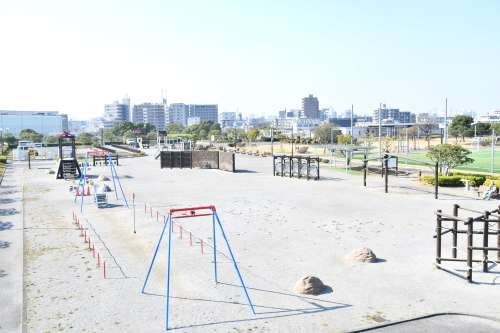 | 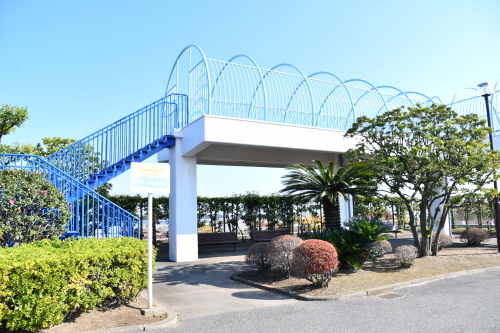 |
Morigasaki Park
You can see Haneda Airport from the observation deck in the park. |
- Tell us your favorite Ota City spots other than along the railway.
Mr. Degawa, Engineering Department:
I often go to Tamagawadai Park and Denenchofu Seseragi Park near Tamagawa Station with my children since we can get there by bicycle from home. There is also Tamagawa Sengen Shrine nearby, and the cherry blossoms there are beautiful. You may be able to see Mt. Fuji from the viewing platform there. I also recommend the oden shop, Grand Koike Shoten, which is located slightly upstream from Tamagawadai Park. A long time ago, the Yomiuri Giants had their practice field on the riverbed of the Tama River, so it seems that the shop was a favorite of the athletes. You can see lots of autographed papers, photographs, and many related items up on display in the shop. I’m guessing it's a spot that only people in the know tend to visit.
Mr. Mikami, Engineering Department:
I’d have to say Ota Market. One time, I dropped in there after a night shift. It was great to be able to eat a set meal with fresh seafood at a shop in the market. The fact that such a spot is nearby is one of the attractions of Ota City.
Ms. Shibazaki, Sales Department:
I like Keihin Kamata Asuto Shopping District between JR Kamata Station and Keikyu Kamata Station because it has a quaint atmosphere. Development is progressing around here, and so the number of fashionable spots is increasing, but Asuto retains an old-fashioned atmosphere. You can buy prepared dishes for reasonable prices and feel the kindness of everyone. These are the reasons why I like Asuto so much.
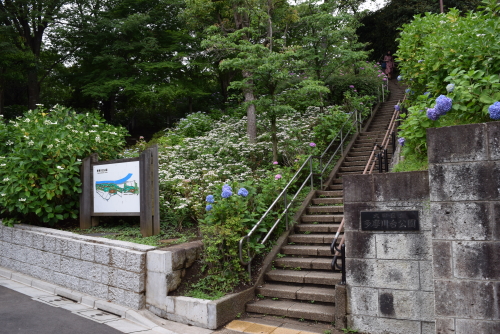 | 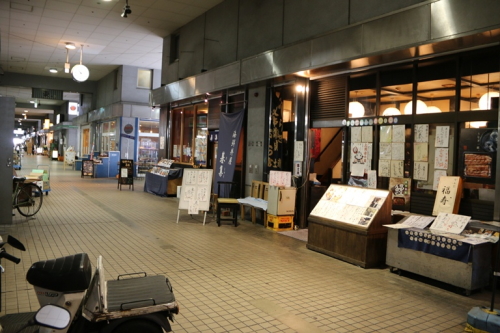 |
| Tamagawadai Park (left) and Ota Market (right) |
It was very interesting to learn the secrets of the Tokyo Monorail, which is not only attractive as a means of transportation which can easily get you to Haneda Airport, but also for the enjoyment of riding, watching, and various other attractions! We hope you will enjoy some of the Tokyo Monorail’s numerous charms.
The Tokyo Monorail official site:
http://www.tokyo-monorail.co.jp/english/
